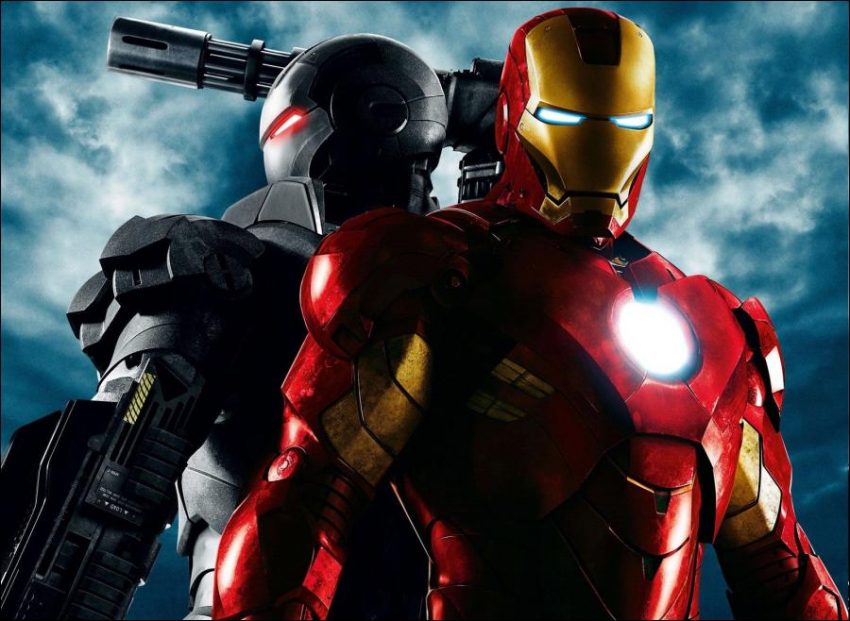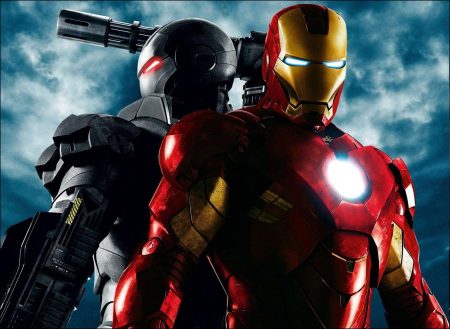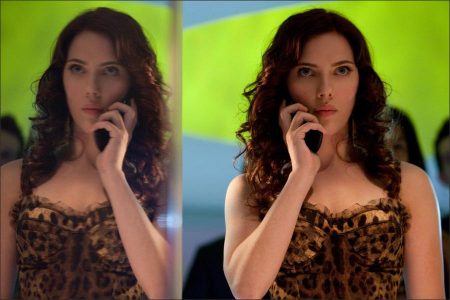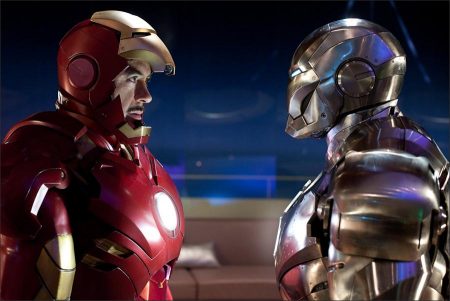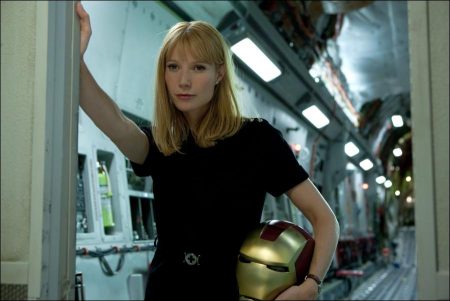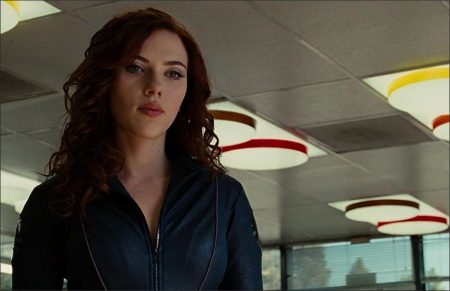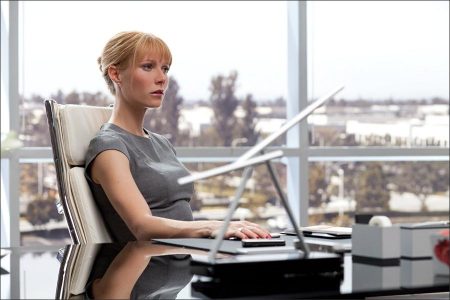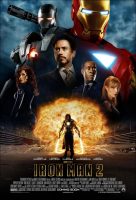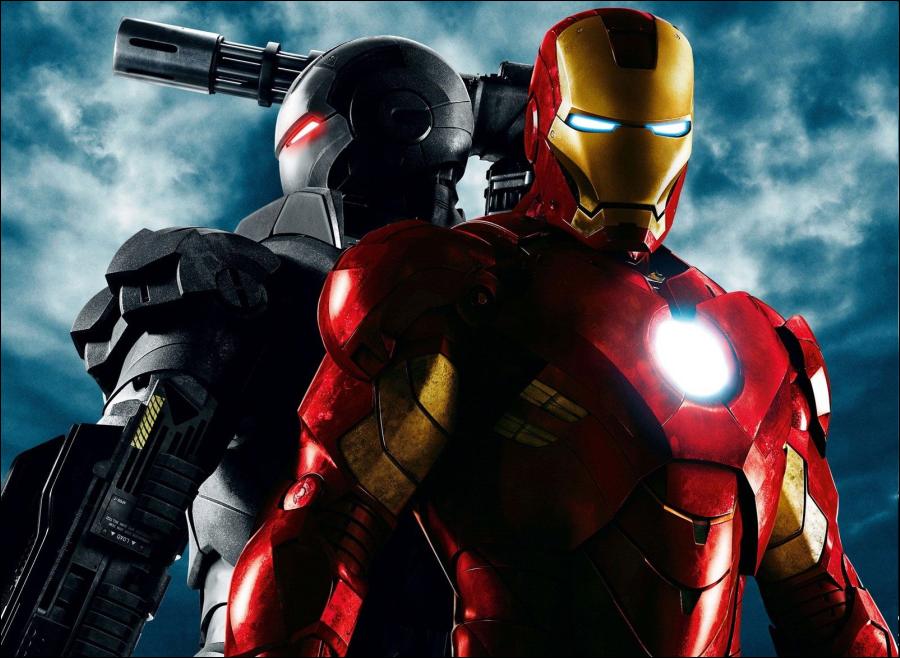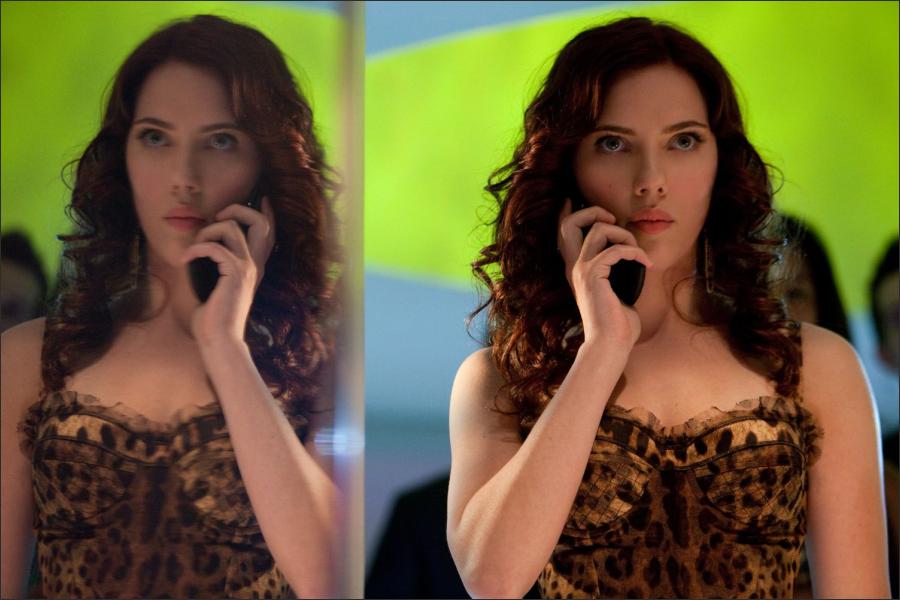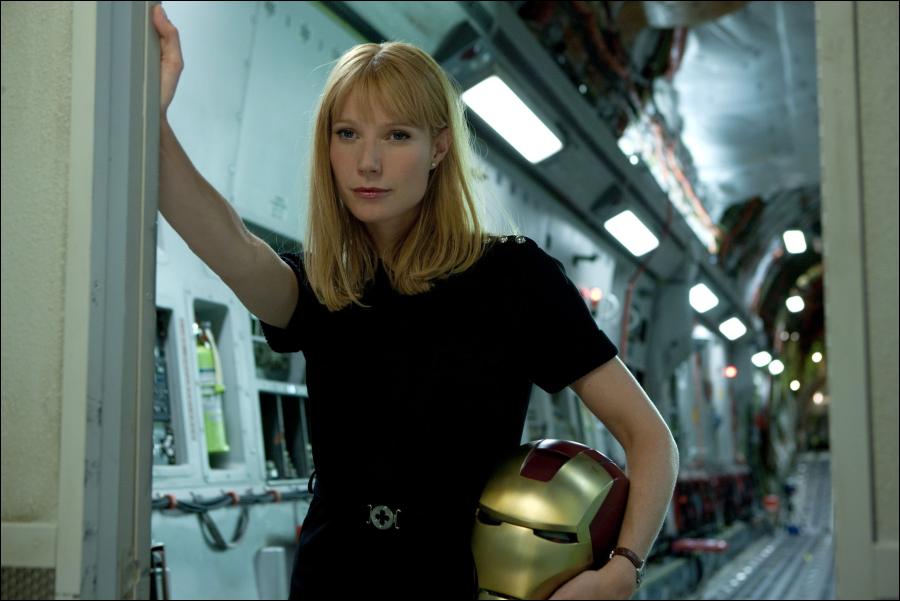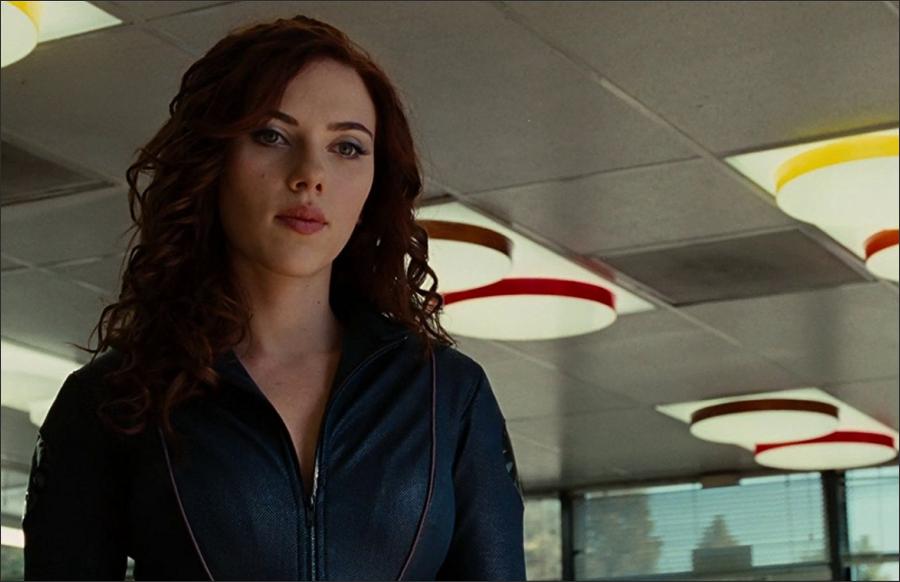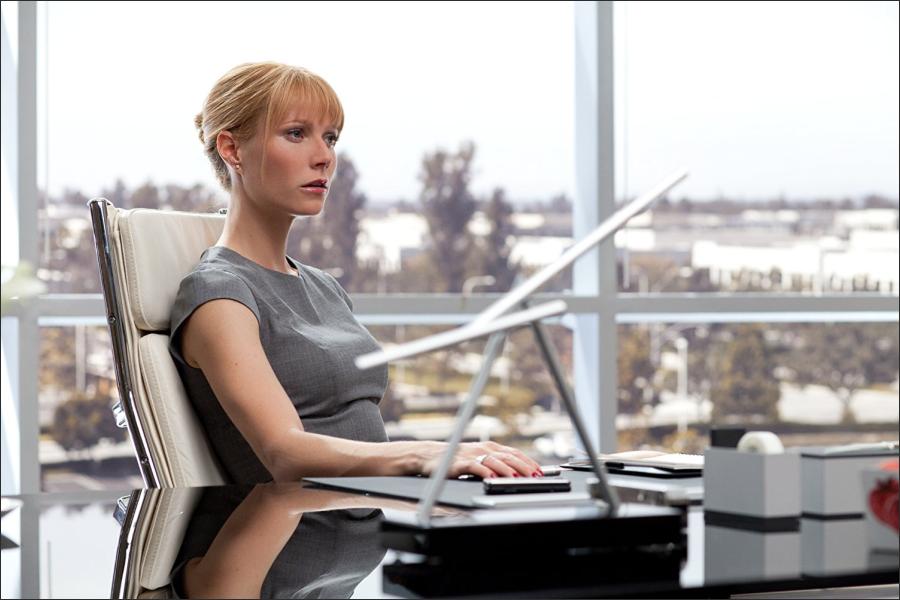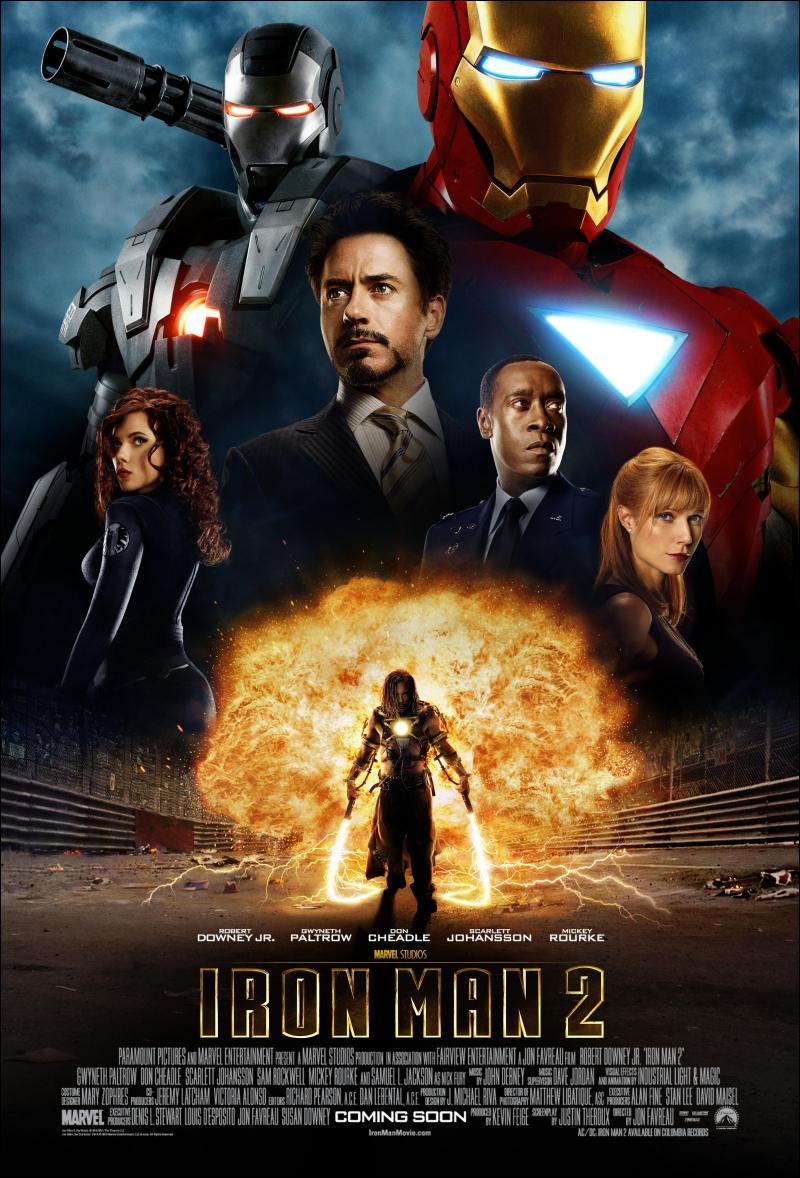Iron Man 2: Preparing For A Sequel
With the worldwide success of “Iron Man” at the box office, director Favreau faced the inevitable challenge following up the beloved film with the second installment of the franchise.
“When we were shooting the first film, we weren’t planning a sequel, but we were also aware that if things went well, there would be one; so we thought about what the big picture would be and what we were leading to in terms of story,” Favreau observes. “The challenge in developing `Iron Man 2′ was how to stay true to what audiences enjoyed about the first film while at the same time raising the bar in every aspect – an interesting but sometimes difficult line to walk. If it gets too complicated, the sequel becomes overwrought and loses its light touch. But if you don’t do anything more than you did the first time, it just feels like more of the same-so doing a sequel can be a mixed blessing.”
“The great thing about having Jon Favreau back at the helm is that we have a fantastic rapport because we’ve been together now for almost four years thinking and talking about the world of Iron Man,” says Feige. “We’ve developed a shorthand now, so most of the time we know what the other is thinking. Jon did an amazing job on the first film and we really followed his lead in terms of tone, texture and humor. When you see Tony Stark and his interaction as Iron Man, it is not just your hand-on-the-hip super hero. It is somebody who has wit and cynicism on one side and extreme optimism on the other; the character really is what he is because of two people, Jon Favreau and Robert Downey.”
“One of the great things that came from the success of the first film was that we had established a tone that was distinctively fresh and cool, so in preparing for the sequel it became `how do we keep that tone going?,’” notes co-producer Jeremy Latcham. “The tone is what really makes audiences feel like they’re watching an `Iron Man’ movie. It’s really fun, it’s edgy, but it’s not brooding, nor is it cartoony or overly political. So one of our big goals in developing the story and characters was making sure everything was in line with the tone we established in the first film.”
“Once you establish the tone and characterizations and people love the character, it gives you a lot of freedom to jump into whatever stories you want to tell next,” mentions Feige. “Often times our favorite stories in the comics are ones that can’t be done as an origin story, because they happen 200 or 300 issues into the series. But with a sequel, you can really take the gloves off because you already know what worked really well in the first film and can up the ante in those aspects. Having that kind of opportunity is one of the great joys in filmmaking.”
For Favreau and the filmmakers, developing the story for “Iron Man 2” started long before the first page of the script was written.
“The writing process on `Iron Man 2′ was unique and began before there was a screenwriter brought on,” explains Favreau. “That tends to be the case with these types of movies because what happens is that Robert Downey, Kevin Feige, Jeremy Latcham and others all sit around and start discussing things like what interests us; where should the characters go; where should the next leg of the journey start; what should Tony’s arc be, etc. So you begin to outline a basic story and break it down into scenes and set pieces. Then when you arrive at that point, the actual scriptwriting process can begin.”
For “Iron Man 2” the filmmakers selected Justin Theroux – an avowed life-long fan of the comic book super hero – to write the screenplay. Theroux had recently co-written (with Ben Stiller) the screenplay to the comedy hit “Tropic Thunder,” which had earned Downey an Academy Award nomination as Best Supporting Actor.
“What drew me to the project first and foremost was the opportunity to work with Robert Downey Jr. again,” Theroux admits. “It also helped that I was such a big fan of the comics and actually owned an Iron Man doll that had a little spandex outfit and little RT in the center that you could manipulate. Iron Man is a super hero who you feel could actually exist someday. He’s not so far fetched; it seems possible that you could create an armored suit that could fly. That’s what drew me in at a very early age.”
“In writing for Robert, I think of it as if I was writing for James Brown,” says Theroux. “James Brown was a musical savant in that he always knew what a song needed to work and Robert is the same way when it comes to writing scenes. He has a very organic way of approaching a character, and although I have a good understanding of his voice, I never try to jam words into his mouth that don’t belong there. He inherently knows when there is the slightest hint of a false note in the script and is the first person to stop and say `We need to finesse this a bit.’” Downey pushed for Theroux to write the “Iron Man 2” script largely based on his experience on “Tropic Thunder.”
“The first thing about Theroux is that he is an artist and a renaissance man. On `Tropic Thunder,’ I knew by the time we were shooting Act 3 that everything he’d set up earlier in the film had paid off. Also, I like his voice, his sense of humor and his take on things. He’s very fluid. I just knew that he was our guy. And fortunately, everyone else agreed.”
In developing the storyline for “Iron Man 2,” the filmmakers had to decide what story elements and characters to draw from in the more than 600 issues of Iron Man comics Marvel has published over the past 42 years. For Favreau, having the opportunity to pick from any place he chose within the vast amount of source material was not without its pitfalls.
“When you have multiple characters in a film, it tends to get complicated, and I think many sequels fall short because they create too many layers of complication, both in character and in plot,” says Jon Favreau. “Plot is something I’m not particularly great at because I don’t have a mindset for twisty, turny, maze-like stories. I’m more of a story guy, which I used to think was synonymous with plot, but it’s really a different element of movie-making.”
The director continues, “Story has more to do with the arc of a character – where they begin and end, what challenges they face, and how they change. The progression of self-transformation usually has to do with having a moment of clarity in which you realize a change needs to be made and then committing to that. Inevitably, because we’re human, we stumble and can fall off the path in the face of duress, which tends to make us regress to our old ways. In the case of Tony Stark, here’s a person who is facing similar but different challenges than he did the first time around. In `Iron Man,’ Tony probably should have slowed down, but he was inspired by the discoveries that he made in escaping captivity in the cave and his revelations about where he fits into the world.”
“When you have a lead character as rich as Tony Stark, you really want to explore the trials and tribulations of his life,” adds Feige. “We sent the audience a curve-ball at the end of the first film when Tony outed himself to the public in a way that no super hero has ever done before. That immediately sets up the tension and the conflict for this film and that’s what we wanted to continue to explore. We didn’t want to hide from that fact that Tony Stark is Iron Man. Throughout the comic series, people know who Tony is and we didn’t want to be shackled by the notion of secret identities; so in outing Tony at the end of the first film, we opened the door to wherever we wanted to go.”
”One of the massive advantages we have is stacks and stacks of Marvel Comics with some of the best stories ever told,” says co-producer Latcham. “During the development of the script for the first film there were many scenes, characters and suits that were our personal favorites, but we said, `Let’s save it for next time’ because it felt like too much to introduce on top of all of the things we had to establish to acclimate the audience. All those elements we banked from our original research we now had at our disposal and Justin did a great job of incorporating many of them into the screenplay without sacrificing the tone we had established and wanted to maintain.”
Among the challenges Theroux faced in the initial stages of the script writing process was finding a jumping-off point for the complex character of Tony Stark. “What’s unique about this sequel is that (in the first film) we left Tony in real-time,” says Theroux. “He is now out of the closet as a super hero; so right off the bat, we knew addressing that matter was the first nut we had to crack. How do you take a guy who has a personal life – as well as a celebrity life – and create a world around him? So we created events, places and newsreels to sort of really give him a well-rounded resume for what he has been doing since the end of the first movie and how people have reacted to him.”
Theroux continues, “We also had to rectify what to do when a private citizen, even a really rich and powerful one, comes up with something that has the ability to tip the balance of power, not just nationally, but globally. Initially we thought it was going to be difficult to solve, but it actually gave us a bigger platform and playground for the character and made him more interesting and likeable. Tony has to balance that line of celebrity and hero, and what happens when you say to the world `I am Iron Man.’ What does that statement buy you and what problems does it present?“ For the filmmakers, the answers to those questions proved to be extremely fertile ground in the development of “Iron Man 2.”
“After discussing the many different avenues where we could go, we decided to have the film begin six months after Tony’s infamous press conference,” Favreau explains. “In that time period, Tony has been the subject of a lot of publicity and he’s been trying to figure out what to do with Stark Industries because he isn’t manufacturing weapons anymore. If he was the most famous man in America after the first film, he’s definitely the most famous man in the world in the new one.”
The overwhelming success of “Iron Man” also catapulted its star, Robert Downey Jr., back into the rank of worldwide movie star.
“I think people who didn’t know who `Iron Man’ was were intrigued by the fact that Robert Downey was playing the character,” Favreau contends. “He is an amazingly talented actor and I think people were waiting for him to do the right project. It was one of those situations where the material and the actor married well and probably my single largest contribution to `Iron Man’ was recognizing that connection and making it happen. Robert really delivered and put to rest any doubts about how serious he was about being a movie star and being a major player in Hollywood.”
For Downey, who followed “Iron Man” with award-winning performances in the box office hits “Tropic Thunder” and “Sherlock Holmes,” the opportunity to continue playing the eccentric billionaire industrialist Tony Stark was one he truly appreciated.
“Since the end of the first film, the general public has grown to love Tony Stark because he has kept the world a very stable, peaceful place; but the government is threatened by him because he doesn’t really answer to anybody,” explains Favreau. “It’s worked out well so far, but it’s a big point of concern to have a powerful armored suit that is capable of mass destruction in the hands of a private citizen who they don’t consider to be the most stable guy.”
The director continues, “We felt there was an opportunity to show Tony Stark as someone who could capture the imagination of not just Americans, but people around the world, and could be a unifying force.”
Downey traces the evolution of Tony Stark’s life from the end of the first film to the beginning of “Iron Man 2.” “In the first film Tony was in this kind of nether-world, somebody who needed to be put in check. By the time `Iron Man 2′ starts you’re essentially seeing Tony’s persona, and he’s showing that persona to everything and everyone around him because he doesn’t want them to know that anything has changed. But a lot has changed, and he’s really in quite a desperate way. The hero’s journey is really what he’s not telling people, not what he’s doing with or without a suit on. And that extends to his own emotional insecurity by not really being able to share it with Pepper.”
The actor continues: “In the interim Tony has noticed that the shelf life on his battery is nearing his expiration date. So, he’s been spending a lot of time working on a renewable energy source. We also left off on the first film with Tony and the military having a somewhat uneasy relationship, though when he comes in and does something right they back him up. I’m sure Rhodey has had a lot to do with that. And I think there’s also been some climbing tension between him and Rhodey.”
Iron Man 2 (2010)
Directed by: Jon Favreau
Starring: Robert Downey Jr., Gwyneth Paltrow, Scarlett Johansson, Don Cheadle, Jon Favreau, Mickey Rourke, Sam Rockwell, Christiane Amanpour, Garry Shandling, Paul Bettany, Kate Mara, Leslie Bibb, Krystal Ellsworth, Melanie Brown
Screenplay by: Justin Theroux
Production Design by: J. Michael Riva
Cinematography by: Matthew Libatique
Film Editing by: Dan Lebental, Richard Pearson
Costume Design by: Mary Zophres
Set Decoration by: Lauri Gaffin
Art Direction by: Page Buckner, Michael E. Goldman, David F. Klassen, Suzan Wexler
Music by: John Debney
MPAA Rating: PG-13 for for sequences of intense sci-fi action and violence, and some language.
Distributed by: Paramount Pictures
Release Date: May 7, 2010
